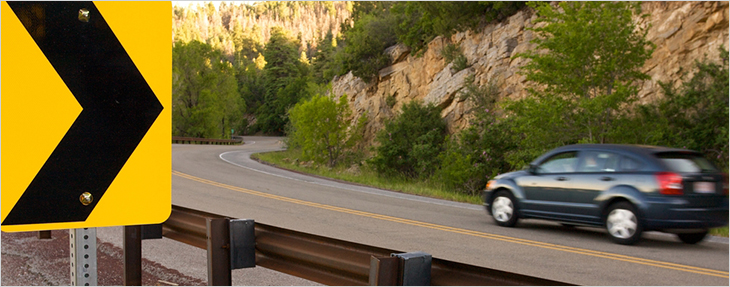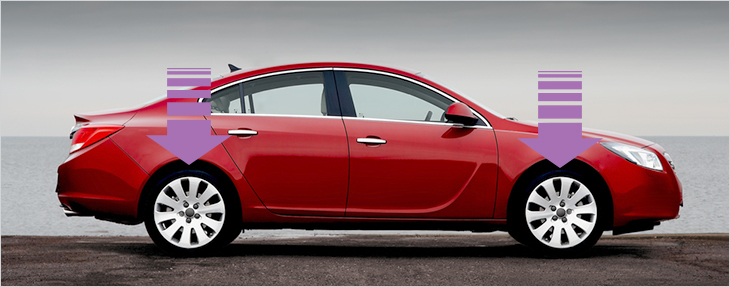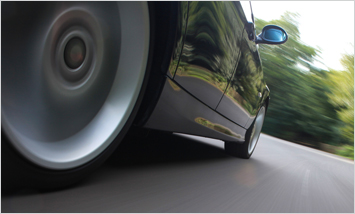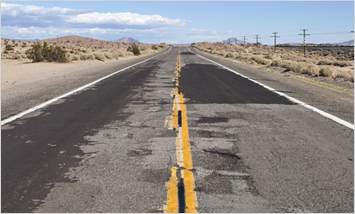Bearing Car Weight
Tires cushion lowers the impact from the road by bearing the
car weight, while also transfers the engine power, braking power and change
of direction to the road to maintain the movement of the car. Tires require
air injection by adopting the structure and compound to bear the great load
of cars. Sometimes, the tube inside the tire is used, but in the tubeless
type in which the rubber that serves as the tube is attached on the inside
of the tire, the air is injected after the tire is assembled with the wheel,
and thus requires a firm connection. Moreover, car load and running
stability can only be guaranteed by maintaining optimal air pressure. Tires
are developed in various and complicated forms by applying performance and
wheels due to the recent trend of high quality and high performance in
vehicles.
Transferring Driving Power
The car power is transferred to the tire through the
mission, conveying the driving and braking power to the roads. The power
transmission system of the car transfers the engine power to the running
tires and moves them toward the direction of the tread that is between
the road and the tires. If the brakes are applied on the car, frictional
force occurs in the opposite direction of the one between the tires and
the surface, which is called the braking power.
Cushioning the Impact
The suspension system connecting the tires to the car body
absorbs vibration and shock from the roads and determines the ride
comfort of the car. If there is not enough air pressure, there is
greater rotational resistance, which generates heat and possibly damage.
If there is too much air pressure, the flexibility decreases as well as
the ride comfort. Also, lower aspect ratio of the tire indicates greater
driving stability than the ride comfort.
Changing Direction

Transferring power for the car to run or stopping the car is
done by various devices in the car body, but in the end, tires affect the
overall driving performance. In the operation of the steering system, the
driver turns the steering wheel and the operating force is conveyed to the
steering gear, and at this point the car slows down and the direction
changes, transferred to the knuckle-spindle through the linkage such as the
pitman arm, drag link and knuckle arm. The knuckle-spindle rotates around
the kingpin with such movement, and thus the motion of the front wheels is
changed. And the knuckles on both sides are linked to tie rods through the
knuckle arm to create cornering force. If force is given from the side of a
car driving straight, the force to keep the car straight in response to the
force occurs between the tires and the road. Also, if the car makes a
turning movement, centrifugal force is created on the car, and in response
to this force, the tires create centripetal force around the center of
turning between the tires and the road in response. This force that occurs
in the orthogonal direction is called ‘side force.’ Also, the
force that occurs in the orthogonal direction of the direction of the tires
is called the ‘cornering force.’





